written by: Katherine Simpson, Gordon College Spring ‘19 cohort
At Jasenovac concentration camp, between 80,000 and 100,000 ethnic Serbs, Jews and Roma people as well as political enemies of the Ustaša regime were killed. Among the dead, around 20,000 were children. The camp was notable among concentration camps for killings in the most brutal ways—by stabbing, hanging, beating, and exhaustion.
The land, however, bears no mark of this. All that remains of the camp is the rail line along the river Sava through which prisoners were transported and an empty field, the buildings having been burned at the end of WWII. When our cohort visited on a clear day in March, the sky was beautiful, and the grass was green. Where there once was ugliness, now stands a beautiful concrete flower, a monument designed by Serbian architect Bogdan Bogdanović to memorialize the victims of Jasenovac.
Jasenovac Memorial Site
Bogdanović said of the unconventional abstract design:
“The basic symbol is precisely a FLOWER, the symbol of eternal renewal, and after a series of variations, stylized as a flower structure, with the superstructure, turned in two ways – through the crypt towards the victims from whom it draws its roots, and the crown, as a kind of inversed dome, towards the light and the sun. Symbolically towards life and freedom.”
The juxtaposition of life and death becomes even clearer when you visit the museum. It is dark inside, with videos of survivors, slideshows with photos and stories of victims, and personal effects from those who were interred at Jasenovac. The museum’s exhibits use official documents and personal stories to weave the story of Jasenovac, transcending the historical to reach the deeply human.
As I walked through the dark corridors, I kept returning to handwritten objects from victims of the camp - books of work songs written by women in the camp, postcards from prisoners to their families on the outside. As Bogdanović hoped the flower would, these small pieces of life in Jasenovac reminded me that wherever there is death, wherever there is suffering, life also persists.
As Holocaust survivor Primo Levi wrote of his time in Auschwitz:
Sooner or later in life everyone discovers that perfect happiness is unrealizable but there are few who pause to consider the antithesis: that perfect unhappiness is equally unattainable. The obstacles preventing the realization of both these extreme states are of the same nature: they derive from our human condition which is opposed to everything infinite. Our ever-insufficient knowledge of the future opposes it: and this is called, in the one instance, hope, and in the other, uncertainty of the following day. The certainty of death opposes it: for it places a limit on every day joy, but also on every grief.
In the face of such terrifying suffering, such unspeakable atrocity, perhaps the best that we can do in our limited capacity is to remember that each individual who passed through Jasenovac camp suffered and thousands died. But we also must remember that each individual lived. Each individual had a story including and beyond their victimization.
In standing on the fields of Jasenovac, thinking of the lives of victims, reading each name, seeing a photo of each face, we have remembered the horror of their suffering and recalled that this does not define them. Beyond suffering, there is a story, in each story there is life.
After visiting Jasenovac, we traveled to Vukovar, a city that has become a symbol of Croatian national identity since it fell to Serbian forces in November 1991, after three months of siege. We followed the motions of more than 200 war victims who, after hiding out in the basement of the Vukovar hospital, were taken to a hangar at Ovčara farms where they were tortured. Finally, we visited the Vukovar Memorial Cemetery which marks the site of the mass grave where these individuals were killed and buried.
Vukovar Memorial Cemetery
The basement of the Vukovar hospital has been maintained almost exactly as it was during those three months of siege in 1991. There are marks in the ceiling from where the bombs fell, and the operating table used for the surgeries during the siege is placed at the entrance.
Experiencing the claustrophobia of Vukovar hospital, the darkness of the hangar at Ovčara, and the rows of graves at the memorial cemetery, it is easy to be stuck in the past, reliving the trauma of those three months; however, in confronting these historical traumas, we do justice to those who have suffered. We are forced to evaluate our own complacency and indifference in a violent world. In this way, we are prepared to act for peace to prevent such crimes from ever being committed again.
As the atrocities committed by both Serbs and Croats at Vukovar and Jasenovac show, no one among us is incapable of committing violence. Likewise, we are all capable and culpable for promoting peace.



